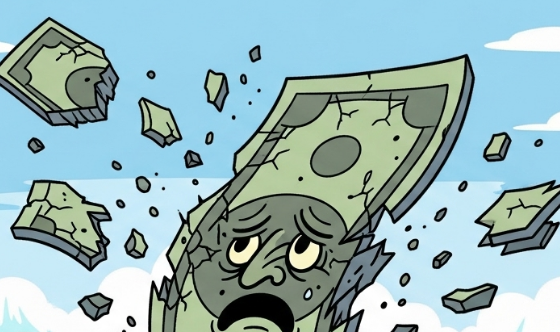
You’re watching history unfold in real time. The U.S. Dollar Index has fallen 10.7% in the first half of 2025, marking its worst performance for this period in over 50 years. This isn’t just another market fluctuation. It’s a fundamental shift that’s reshaping the global economic landscape—creating winners and losers across continents in ways that will define the next decade.
Think of the dollar as the circulatory system of the global economy. When that system starts breaking down, it doesn’t just affect America. Every economy, every trade relationship, and every country’s competitive position shifts dramatically. Right now, we’re witnessing the most significant realignment of global economic power since the end of World War II.
The dollar index has fallen 10.8 percent in the first half of 2025, driven by multiple converging factors that aren’t going away anytime soon. President Trump’s stop-start tariff war, and his attacks that have led to worries over the independence of the Federal Reserve, have undermined the appeal of the dollar as a safe bet. Meanwhile, economists are worried about Trump’s “big, beautiful” tax bill, currently under debate in the US Congress, which is expected to add trillions of dollars to the US debt pile over the coming decade.
Why This Dollar Decline Reshapes Everything
This isn’t your typical currency weakness. The gap between U.S. 10-year bond yields and those of major partners is at its widest since 1994. Foreign investors are quietly backing away from dollar assets. A recent Bank of America survey shows global fund managers at their lowest USD allocation since 2005.
For global economies, this creates immediate and profound shifts in competitive dynamics. Countries that have struggled under dollar strength suddenly find their exports becoming more competitive. Manufacturing nations see orders flowing back from higher-cost producers. Commodity exporters watch their resources become more valuable as dollar-denominated prices adjust upward.
But the changes go deeper than trade flows. Entire economic development strategies built around dollar relationships are being reconsidered as countries realize they need alternatives to American financial infrastructure.
The Export Economy Winners
European economies are experiencing an unexpected renaissance as dollar weakness makes their products more competitive globally. Germany’s manufacturing sector, long pressured by a strong dollar, is seeing export orders surge as German machinery and automobiles become relatively cheaper for American and emerging market buyers.
The eurozone benefits from a double advantage: European exports become more competitive while the region’s strong industrial base positions it to capture market share from American competitors. Countries like Italy and France, with significant luxury goods and industrial exports, are seeing substantial boosts to their trade balances.
Asian export economies are experiencing even more dramatic shifts. South Korea’s technology sector finds its semiconductors and electronics more competitive against American alternatives. Japan’s automotive and machinery exports gain pricing advantages, while the country’s manufacturers can better compete with Chinese producers who also benefit from dollar weakness.
China presents a complex case. While Chinese exports become more competitive in dollar terms, the country faces the challenge of managing its massive dollar reserves. As the dollar weakens, China’s foreign exchange reserves lose purchasing power, creating pressure to diversify into alternative assets and currencies.
The Commodity Exporters’ Bonanza
Dollar weakness typically drives commodity prices higher, creating windfalls for resource-rich economies. Australia and Canada, major commodity exporters, see dual benefits as their resources become more valuable while their own currencies strengthen relative to the dollar.
Brazil, Russia, and other emerging market commodity producers experience similar advantages. Oil exporters in the Middle East find their energy resources commanding higher dollar prices, improving their fiscal positions even as they gradually reduce dollar dependence in their sovereign wealth funds.
African commodity exporters benefit significantly from this shift. Countries like South Africa see their mining exports become more valuable, while nations like Nigeria benefit from higher oil revenues. This provides crucial foreign exchange relief for economies that have struggled under dollar strength.
The Import-Dependent Strugglers
Not every economy benefits from dollar weakness. Countries heavily dependent on dollar-denominated imports face mounting pressure as their purchasing power erodes. Turkey, which imports significant energy and raw materials priced in dollars, faces inflation pressures as import costs surge.
Many emerging markets with substantial dollar debt burdens face a complex situation. While their exports may become more competitive, servicing dollar-denominated debt becomes more expensive as their local currencies potentially weaken relative to alternatives like the euro or yuan.
Small island nations and import-dependent economies in the Caribbean and Pacific face particular challenges. These countries often import food, energy, and manufactured goods priced in dollars, creating inflationary pressures that strain their economies.
The Financial Center Realignment
London is positioning itself as a major beneficiary of dollar weakness. As the financial capital most connected to both American and European markets, the UK finds itself uniquely positioned to facilitate the currency diversification that global institutions are pursuing. Sterling-denominated assets become more attractive as alternatives to dollar investments.
Singapore and Hong Kong face interesting dynamics as Asian financial centers. While both have strong dollar ties, they’re also developing infrastructure for alternative currency trading and settlement. Singapore’s development of digital currency capabilities positions it well for the post-dollar transition.
European financial centers, particularly Frankfurt and Paris, see opportunities to capture market share in global finance as institutions seek alternatives to dollar-dominated systems. The European Central Bank’s digital euro initiatives position the eurozone as a potential alternative to dollar-based international payments.
The Manufacturing Renaissance
Dollar weakness creates opportunities for manufacturing reshoring across multiple economies. Countries with strong industrial bases but high labor costs suddenly become more competitive. Germany’s advanced manufacturing, Japan’s precision industries, and South Korea’s technology sectors all benefit from improved cost competitiveness.
Mexico experiences a particularly interesting dynamic as dollar weakness makes it an even more attractive manufacturing destination for companies seeking alternatives to Asian production. The combination of NAFTA advantages and currency benefits creates powerful incentives for nearshoring.
India’s manufacturing sector gains competitiveness as the rupee potentially strengthens relative to the dollar, making Indian production more attractive for global supply chains seeking alternatives to China while maintaining cost advantages.
The New Trade Corridors
Countries are actively building trade relationships that bypass the dollar system. ASEAN’s 2026–30 Strategic Plan prioritises local-currency trade settlement for goods and investment, with analysts estimating this could cut dollar invoicing in the bloc by 15% within five years.
The BRICS nations are expanding their cross-border payment networks, including currency-swap agreements and settlement platforms that bypass the dollar. These initiatives create new economic relationships that weren’t viable under dollar dominance.
European-Asian trade corridors are strengthening as both regions seek alternatives to dollar-mediated transactions. The Belt and Road Initiative gains renewed momentum as countries seek infrastructure that supports non-dollar trade relationships.
The Debt and Development Divide
Dollar weakness creates a complex dynamic for global development. Countries with significant dollar debt burdens may initially struggle with higher servicing costs. However, those that can access alternative funding sources find new opportunities for development financing.
China’s development lending, often conducted in yuan or local currencies, becomes more attractive to emerging markets seeking alternatives to dollar-denominated development aid. This shifts geopolitical influence as countries have more options for development partnerships.
International financial institutions face pressure to offer more diverse currency options for development lending. The World Bank and regional development banks are exploring broader currency baskets for their lending operations.
Your Global Investment Strategy
The value proposition for global investors isn’t about avoiding any particular region—it’s about understanding the new competitive dynamics that dollar weakness creates. Export-oriented economies with strong industrial bases become more attractive investment destinations.
Emerging markets with commodity resources and relatively low dollar debt burdens offer particularly interesting opportunities. These economies benefit from higher commodity prices while avoiding the debt servicing pressures that affect more leveraged nations.
European markets become more attractive for diversification as the region benefits from improved export competitiveness and potential currency appreciation relative to the dollar. Asian economies with strong manufacturing sectors also offer compelling opportunities.
The Bigger Picture: A Multipolar World
This isn’t just about currency fluctuations. You’re witnessing the emergence of a truly multipolar global economy where no single currency or economic system dominates international trade and finance. The war in Ukraine accelerated de-dollarisation, as central banks worldwide witnessed Russia’s dollar reserves being effectively wiped out overnight.
This creates a more balanced but potentially more complex global economy. Trade relationships become more diverse, financial systems become more distributed, and economic power becomes more diffused across regions and currencies.
The dollar’s 50-year dominance enabled a particular kind of global economy—one where American monetary policy affected every other nation’s economic decisions. As that system evolves, global economies gain more autonomy but also face more complexity in managing international relationships.
The value proposition is clear: position yourself to benefit from this global realignment rather than cling to the old dollar-dominated system. Diversification across regions, currencies, and economic systems isn’t just prudent—it’s essential for navigating the multipolar world that’s already emerging.
The dollar’s dominance is ending, but the global economy is adapting and creating new opportunities for those who understand the changing dynamics. The question isn’t whether this transformation will continue, but whether you’ll position yourself to benefit from the new economic reality that’s already taking shape.
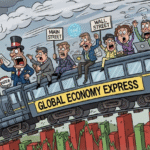
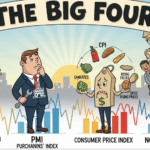
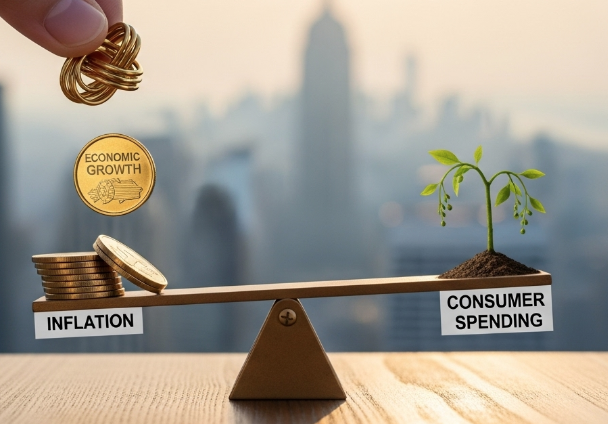
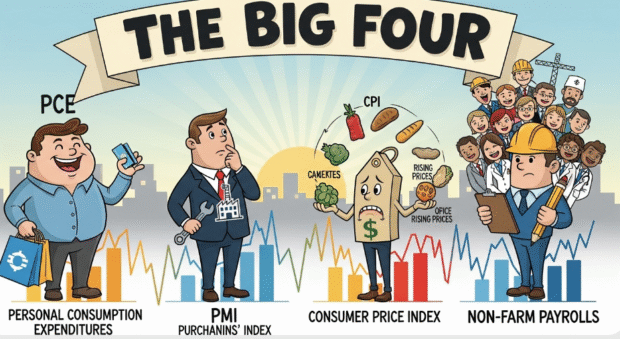
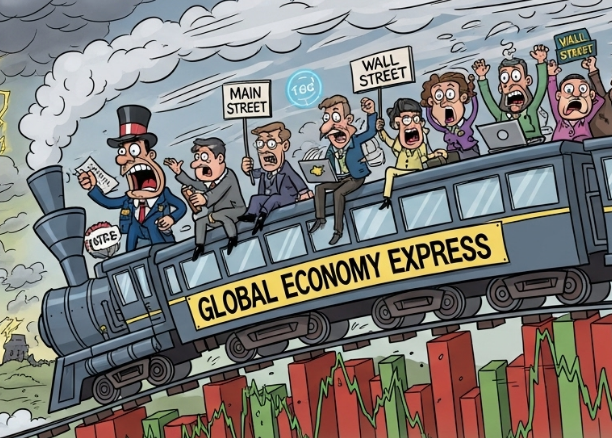
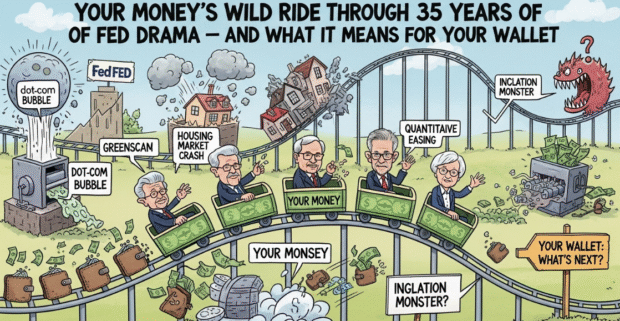
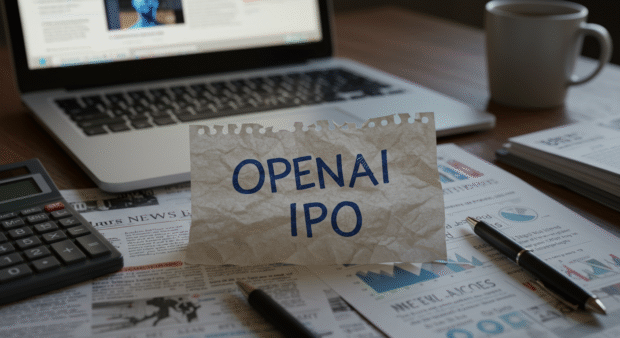
Be the first to leave a comment